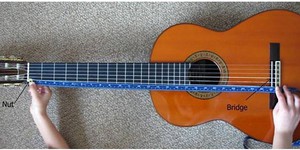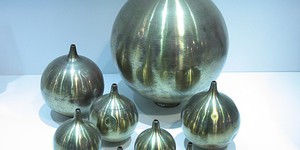Others Like “Ding, Dong, Ding, Dong: Morning Bells Are Ringing” (top 20 results)
|
Did you know that your guitar has a secret? Yes, that's right—hidden along each string are special places where you can play harmonics and make your guitar sound like a bell! In this music science fair project, you'll find out where the main harmonics are located on a guitar, and then see how those locations are related to the length of the strings. So get out your guitar—it's time to ring in a science fair project!
Read more
Use sound recording and analysis software to record voices of your family members. Can you figure out ways to identify each family member by just looking at the analyzed sound patterns from their voice (e.g., spectral frequency analysis)? Develop a hypothesis about what types of sound analysis will identify an individual. Have a helper record additional test files of your family members, without telling you which file belongs to whom. Unplug your computer speakers and see if you can…
Read more
Eardrums are membranes inside your ears that vibrate when sound waves hit them. These vibrations are converted into electrical signals and sent to your brain, which allows you to hear sound. The frequency response of your eardrum, or the range of frequencies that will cause it to vibrate, determines your hearing range. Typical human hearing ranges from about 20 Hz up to 20,000 Hz, although the ability to hear high frequencies typically degrades as you get older. Some other animals can…
Read more
Walk into any music store and you'll find a dizzying array of string choices for your classical guitar, including rectified nylon, clear nylon, carbon fluoride, bronze wound, phosphor bronze wound, silver-plated copper wire, Polytetra-flouro-ethylene (PTFE), each in a range of tensions from low to high. There is no single best brand or best material. All have their advantages and disadvantages. A set of strings that sounds "sparkling" on one guitar might sound dull on another, primarily because…
Read more
Did you know that making a musical instrument is not just an art, but a science, too? You can discover just how scientific by building your own xylophone (or a set of chimes) from copper pipe. First you'll need to do some research about the math and physics involved in the sounds of a xylophone. For example, there are equations that describe the transverse (side-to-side) vibrations of a pipe. These vibrations create the sounds you hear. So, to get specific sounds, xylophone makers must apply…
Read more
Music has many mathematical elements in it: rhythm, pitch, scale, frequency, interval, and ratio. There are many ways to turn these elements into a science fair project. You can investigate how the scale is based upon a special type of number sequence called a Harmonic Series. Another scale used by Bach, called the "Well-Tempered-Scale" or the "Equal-Tempered-Scale", is based upon a series. How are these mathematical series and ratios related to notes, chords, intervals, and octaves? You can…
Read more
The American holiday of Thanksgiving is a favorite of many. Friends and family getting together, a big feast, fancy china and glassware on the table. Who can resist the temptation to make the wine glasses sing? Find out more about how this works with this project!
Read more
What are the best materials to use for blocking out unwanted noise from the environment? You can build a test box (or test frame) around an audio speaker. Use a sound level meter to measure the speaker output. Use different materials to cover the walls of your test box (or frame), and see which materials do the best job at blocking the sound. For a more advanced project, perform your tests using different sound frequencies. Are some materials better at blocking certain frequencies than…
Read more
Beats are a pattern of oscillating sound intensity (i.e., the volume of the pattern grows and fades with a regular cycle). They occur when two tones of almost equal frequency interfere. People can perceive beat frequencies below about 7 Hz. Figure out how to create sound files to play pure tones on your computer. Create files with a pure tone of one frequency in the left channel, and a pure tone of a different frequency in the right channel. Systematically explore different frequency…
Read more
Helmholtz resonance, or air cavity resonance, refers to the resonance of air in a container with a small opening, like a plastic bottle or the devices shown in Figure 1. The resonant frequency of the air depends on the volume of the air in the container and the geometry of the opening (its length and cross-sectional area). The Helmholtz frequency is not the same as the natural frequency of an air column in a cylinder, where the opening is the same size and shape as the rest of the cylinder. …
Read more
|
Explore Our Science Videos
Line-Tracking Robot: BlueBot Project #3
Build a Gauss Rifle
Candy Snap! Does freezing candy make it more brittle?








